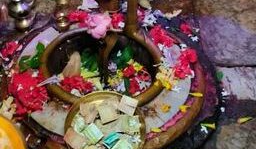Lord Bimaleshwar Shiva Temple (Leaning Temple of Huma)
The Leaning Temple of Huma in India is one of only two leaning temples in the world.It is located in Huma, a village situated on the bank of the Mahanadi, 23 km south of Sambalpur in the Indian state of Odisha. The temple is dedicated to the Hindu god Lord Bimaleshwar.
This temple of deity Shiva was built in 1670 AD. This leaning temple was constructed by the ruler known as Baliar Singh who was the 5th ruler of the kingdom of Chauhan of Sambalpur, Odisha, India.
The temple is positioned on a rocky outcrop but leaning and it is assumed that flood in the river or earthquake might have caused displacement of the rocky bed. This tilting has fascinated historians, sculptors and other researchers. It is surprising that the main temple is tilted in one direction, whereas the other small temples are tilted in other directions. Every structure within the temple complex is in a tilted condition, including the boundary wall.
The villagers and priests claim that the angle of inclination has not changed during last 40 or 50 years. The tilt may be due to a geological reason; the underlying rock may be uneven in structure.
Legend
The worship of Shiva is said to have been initiated by a milkman, who crossed the Mahanadi daily to a place on the bank where the underlying rock cropped out. Here he offered his dole of milk, which was immediately consumed by the rock. This miraculous circumstance led to inquiries, which ended in the construction of the present temple by the King.
An annual fair takes place at the foothill of the temple in March every year on Shivratri. This fair attracts a huge crowd which includes foreign visitors. The Government of Odisha has proposed a hanging bridge to attract more tourists to the annual fair.[6] There is a special type of fish found here known as ‘Kudo’ fish; they are frequently fed by visitors. It is believed that if anyone was to catch the Kudo fish turns into stone by a curse, there is a stone statue of a woman at the temple who is cutting one of the Kudo fishes, it is said that she became stone by getting affected by the curse.
















